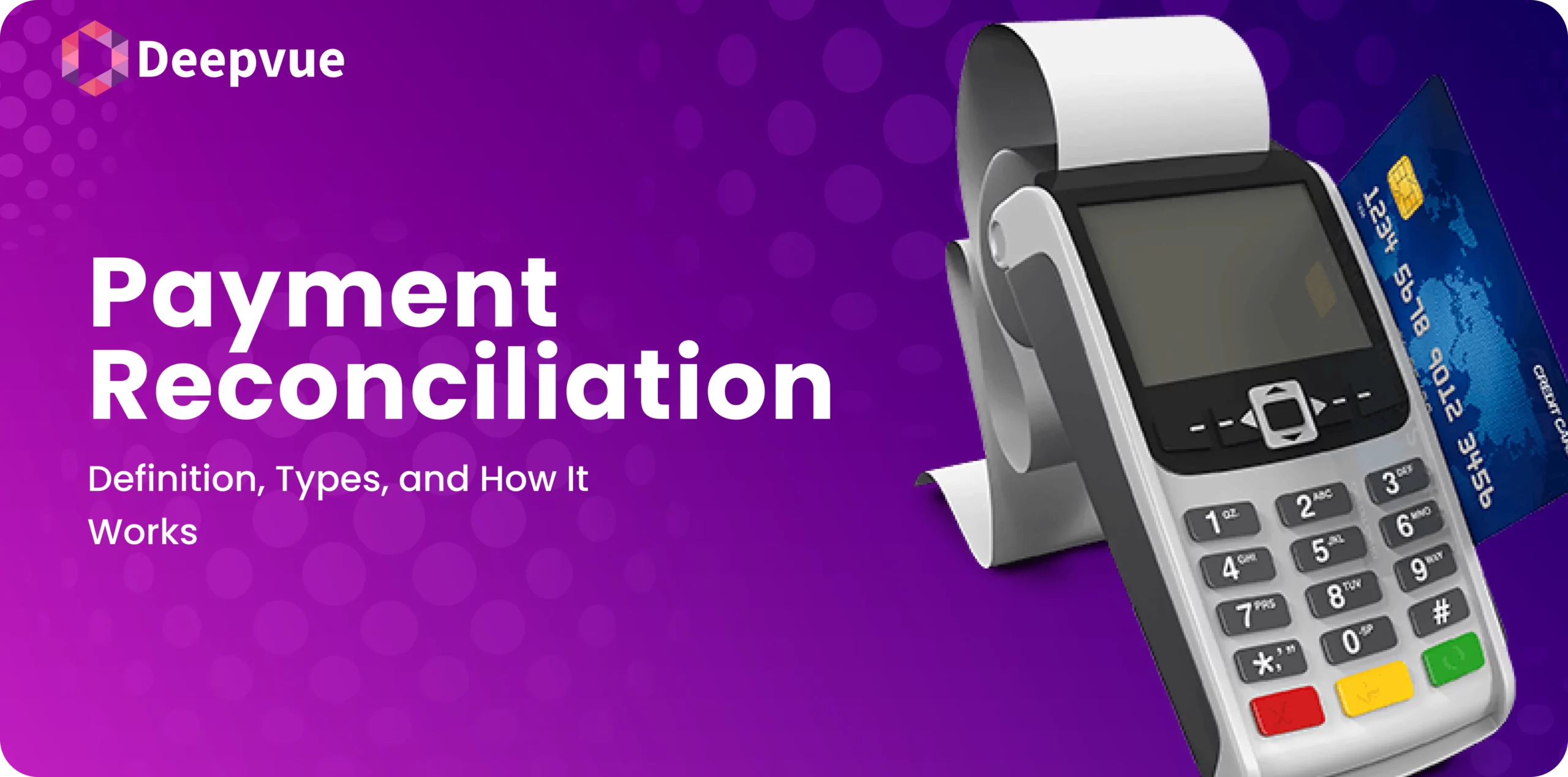For years, the lending process has revolved around onboarding. Know Your Customer (KYC) procedures have long been viewed as the gatekeepers of risk — a mandatory compliance step and, for many lenders, a comforting line of defense. But the real truth is this: KYC is not a safety net. It’s a snapshot.
While KYC ensures that lenders are dealing with a legitimate identity, it says nothing about the borrower’s evolving repayment capacity. Most defaults don’t stem from fraudulent identities — they come from changing financial realities after the loan has been disbursed. By the time a loan starts showing stress in collections, the opportunity to act early has long passed.
In fact, studies show that nearly 65% of loans that go into collections were never flagged as high-risk at the time of disbursal, indicating that most risk emerges after onboarding, not before.
Lenders can no longer afford to think of KYC as the finish line of due diligence. It’s the starting block. The real shift that’s taking place — and the one that every forward-looking lender must make — is moving from static verification to ongoing monitoring because that’s where risk truly reveals itself.
The Limits of KYC in Modern Lending
KYC answers one basic question: “Who is the borrower?”
It provides verified details — name, address, identity proof, and sometimes a PAN-linked financial footprint. For regulatory compliance, this is essential. But compliance is not credit insight.
Here’s what KYC doesn’t tell you:
- Is the borrower’s income steady or declining?
- Has there been a change in job or employer?
- Are there increasing signs of financial stress?
- Are EMI commitments growing faster than income?
A borrower could pass every KYC, Onboarding, and Credit Bureau check and still default three months later, because their financial situation changed and nobody was watching. And in many cases, the lender has no idea until the first EMI bounces. By then, collections teams are already behind the curve.
This gap between identity verification/credit assessment and behavioral insight is where most credit risk hides. And it’s the reason why many lenders, even with stringent onboarding filters, continue to see rising NPAs.
Disbursement Is Not the End — It’s When Risk Actually Begins
Most lending journeys are front-loaded. Data is pulled, underwriters evaluate, a score is assigned, and once the money is disbursed, the borrower exits the spotlight.
But post-disbursement is when the real game begins.
Let’s take an example: Gaurav, a freelance graphic designer, showed strong inflows of ₹1.2 lakh per month during the last quarter — enough to secure a ₹3 lakh personal loan with a ₹14,000 EMI. The numbers looked solid at the time of underwriting.
But Gaurav’s income is seasonal. Within three months, his projects dried up, and his income dropped to ₹40,000. To stay afloat, he started juggling wallet loans and delaying EMI payments.
Without monitoring in place, the lender had no idea anything had changed. The first clue? A bounced EMI. But that wasn’t just a failed transaction — it was the first silent signal of distress. And by the time it happened again, recovery was already more difficult.
Disbursement isn’t the end of risk evaluation. It’s the beginning of real-time risk.
From Snapshot to Timeline: Creditworthiness is Dynamic
Lending based solely on KYC and One-time Credit Risk Scoring is like investing in a stock after checking only last year’s balance sheet.
Borrower behavior isn’t fixed. A clean bank statement from six months ago says nothing about current repayment capacity. Creditworthiness is dynamic — it changes with life events, income shifts, job changes, spending behavior, and family responsibilities.
That’s where monitoring comes in.
Gaurav’s onboarding profile looked strong because the lender saw only a snapshot of his finances — the last three months. But creditworthiness isn’t static. What matters is how income flows and evolves after disbursement.
If the lender had been monitoring income trends post-loan, the pattern would’ve become clear by Month 2:
- A steep decline in credits.
- No new clients or consistent invoicing.
- Rising wallet deposits and small credit line repayments.
This shift could’ve triggered an early warning, giving the lender a chance to reach out, restructure, or at least reprioritize Gaurav in collections.
When lenders observe patterns over time, not just a moment, they unlock a timeline of financial behavior. They begin to see not just “what” the borrower earns or spends, but “how” they manage money. Are salary credits punctual? Are balances healthy at EMI time? Are cash flows volatile or stable?
What Monitoring Looks Like in Practice?
For many lenders, monitoring might still sound abstract. But it’s not. It’s concrete, actionable, and increasingly easy to implement.
Here are just a few examples of what modern post-disbursement monitoring looks like:
1. Salary Credit Monitoring
- Track if salaries are coming in regularly.
- Detect delays, reductions, or complete stoppages.
- Identify employers showing signs of distress (multiple borrowers from the same company showing income issues).
2. Pre-EMI Account Balance Tracking
- Check if account balances remain above the EMI amount near debit dates.
- Low or zero balances indicate repayment friction well before a bounce.
3. Discretionary Spend Patterns
- Sudden spikes in online spending or wallet top-ups post missed EMIs can signal shifting repayment intent.
4. Credit Blackouts
- No inflows in a borrower’s account for over 30 days are a serious red flag.
- It often predicts an approaching default before collections begin.
5. Bounce History and Repayment Trends
- First EMI bounce vs third EMI bounce – both tell different stories.
- The timing and frequency of delays can help categorize borrowers into temporary vs chronic stress cases.
Why Monitoring Is No Longer Optional?
- Early Intervention: Catching signs of distress early allows lenders to engage borrowers before they default. A borrower who misses one EMI may still be salvageable — with the right outreach, restructuring, or grace period.
- Smarter Collections: Monitoring helps segment borrowers based on actual risk. Collection efforts can be focused on those showing clear signs of stress, instead of treating every bounce the same.
- Improved Portfolio Health: Monitoring keeps lenders ahead of NPA trends. It allows for real-time risk mitigation instead of post-default firefighting.
- Dynamic Lending Models: For repeat borrowers or revolving credit, monitoring enables credit line adjustments based on evolving behavior, rewarding good behavior, and containing emerging risk.
How Monitoring Enables More Intelligent Lending Products?
Lenders often talk about personalization. But without ongoing behavioral data, personalization stops at loan amount and interest rate. Real personalization needs to be dynamic, and that’s only possible with monitoring.
Let’s go back to Gaurav.
When he first took the loan, his financial profile looked stable. But had the lender been monitoring his cash flow, they would have seen his income dipping and wallet credits increasing. Instead of waiting for a bounce, the lender could’ve restructured his EMI or offered a temporary pause — a move that would have prevented default and built long-term loyalty.
With monitoring, lenders can:
- Offer dynamic EMIs based on seasonal income — ideal for gig workers like Gaurav, whose earnings vary by quarter.
- Adjust credit limits or top-up offers based on actual financial discipline, not static income data.
- Set intelligent NACH debit dates — for example, if Gaurav’s income tends to come in around the 10th of each month, debiting on the 5th makes little sense.
- Create better FOIR models — based not on one-time bank statements but on 3–6 months of observed cash flow behavior.
- Build financial stress scores that go beyond bureau data — by tracking signs like thinning balances, erratic credits, or increasing reliance on alternative credit sources
Setting Up the Right Monitoring Infrastructure
Detecting early signs of stress, like in Gaurav’s case, doesn’t require a massive overhaul. What lenders need is a smart monitoring layer, and that’s exactly where Deepvue comes in.
Here’s how we help lenders stay ahead of risk, even after disbursement:
1. Ongoing Access to Bank Data (with Consent)
Through seamless integrations with the Account Aggregator (AA) framework or structured statement fetch APIs, we enable periodic access to a borrower’s bank data — daily, weekly, or monthly — based on use case and consent. No manual follow-ups. No stale data.
2. Intelligent Transaction Categorization
Our system goes beyond basic data pulls. It categorizes transactions into salary credits, wallet top-ups, peer transfers, and more. In Gaurav’s case, wallet credits would have been flagged as stress signals, not mistaken for income.
3. Custom Early Warning Signal (EWS) Engine
We provide out-of-the-box and configurable EWS logic, like:
- Income drop >50% over 2 consecutive months
- Multiple short-term credit line inflows in 30 days
- No income above ₹20,000 in the last 30 days
4. Collections Integration & Priority Queuing
Borrowers flagged as “at-risk” can be pushed directly into collections dashboards or CRM tools, prioritized for proactive outreach. Instead of reacting to a bounce, lenders can offer restructuring, reminders, or financial support early.
With gig workers, freelancers, and digital-first borrowers rising in volume, post-disbursement visibility is no longer a nice-to-have — it’s a competitive edge. Deepvue’s platform can turn passive loans into actively monitored portfolios — without adding complexity to your ops.
Privacy, Compliance, and Trust
Any discussion on monitoring must address the elephant in the room: borrower privacy.
The good news? Consent frameworks are already in place. India’s Account Aggregator ecosystem, for instance, is built entirely on voluntary, purpose-specific, and time-bound data sharing. Lenders can only access what the borrower permits, and only for the duration they consent to.
By being transparent with borrowers, using monitoring to assist (not penalize), and offering value in return, lenders can maintain trust while staying compliant.
That said, lenders must be mindful of a few key considerations as they adopt monitoring:
- Purpose Limitation: Only collect data that serves a clearly defined and communicated purpose.
- Data Minimization: Avoid over-collection — more data doesn’t always mean better decisions.
- Consent Renewal: For ongoing access, ensure consent is refreshed at regular intervals.
- User Education: Explain how data will be used, how it benefits the borrower, and what safeguards are in place.
- Audit Trails: Maintain detailed logs to prove compliance and demonstrate accountability in case of regulatory review.
Conclusion: The Inevitable Shift
The lending industry is already in transition. What once ended with KYC now continues with context. Monitoring isn’t a “nice to have” — it’s a survival strategy.
Lenders who rely only on onboarding checks are increasingly flying blind. The ones who win will be those who see risk as a timeline, not a one-time event. They’ll be the first to spot financial stress, the first to act on it, and the first to offer products that evolve with the borrower.
This is the shift every lender will make. The question is not whether, but when.
FAQ
Why is KYC not enough to assess credit risk?
KYC verifies identity and static financial data at a point in time. It doesn’t reflect a borrower’s income consistency, spending behavior, or early signs of repayment stress post-disbursement.
What is post-disbursement monitoring in lending?
It involves tracking a borrower’s financial activity, like income inflow, spending patterns, and account behavior, after the loan is disbursed to detect potential risk early.
How can lenders monitor borrower behavior without violating privacy?
By using consent-based access frameworks like Account Aggregator, lenders can request periodic bank data with full transparency and control given to the borrower.
How does monitoring enable better lending products?
It allows lenders to offer dynamic EMIs, intelligent NACH timing, flexible top-ups, and more accurate FOIRs, making loans more personalized and sustainable.
How does monitoring help in preventing loan defaults?
Monitoring helps detect early distress signals, like income drops or erratic credits, so lenders can intervene with reminders, restructuring, or support before default occurs.








